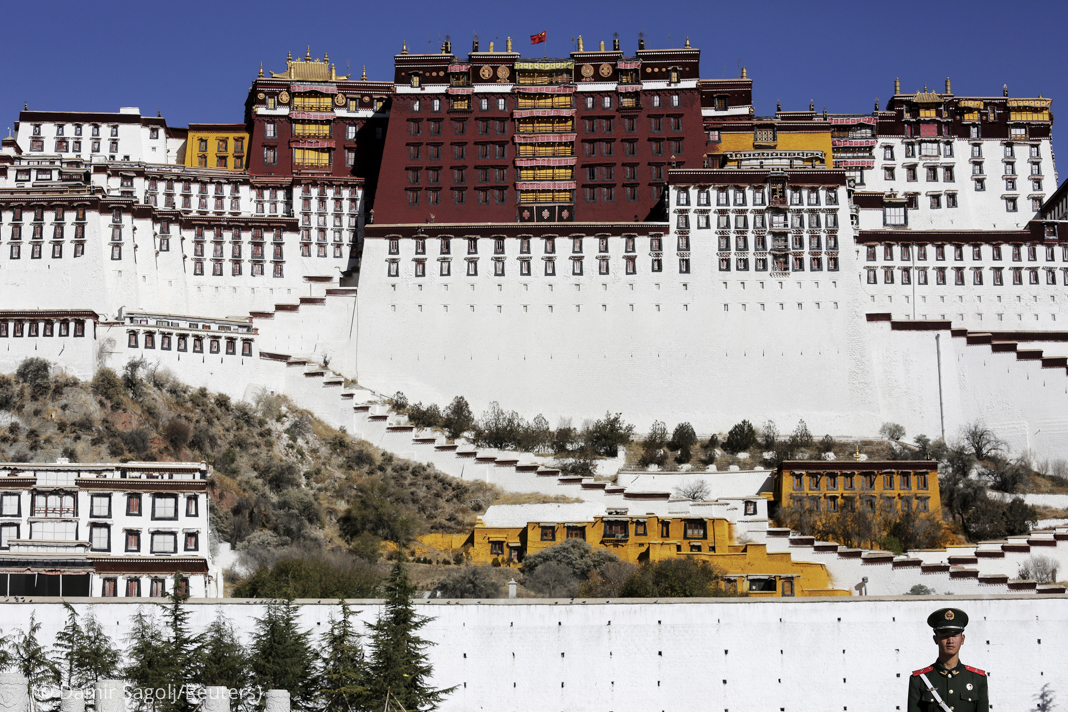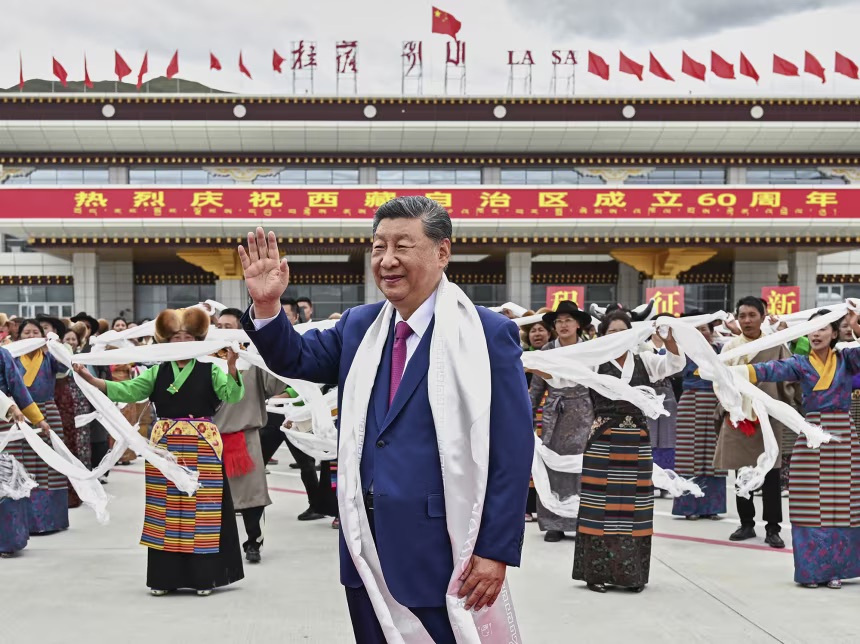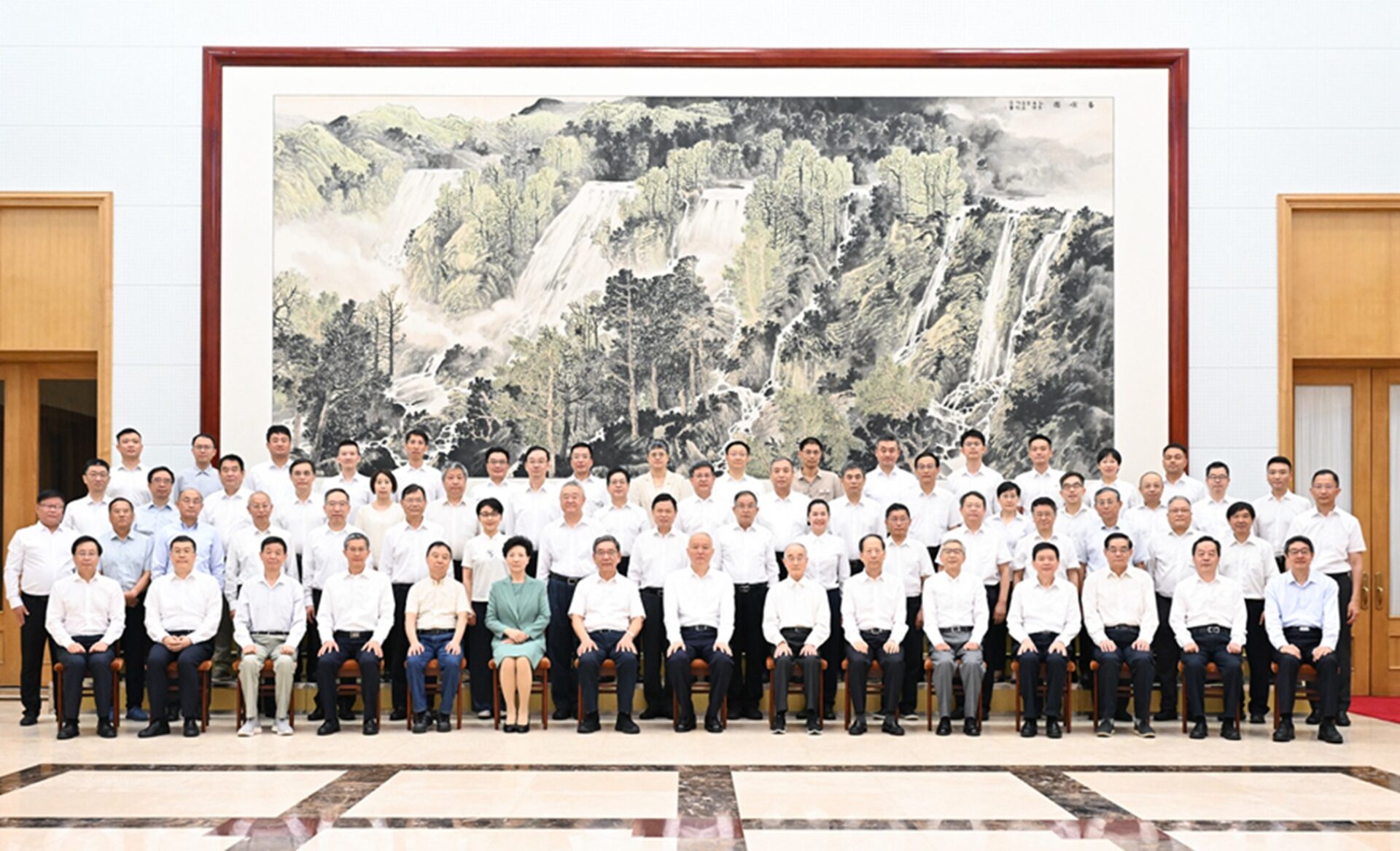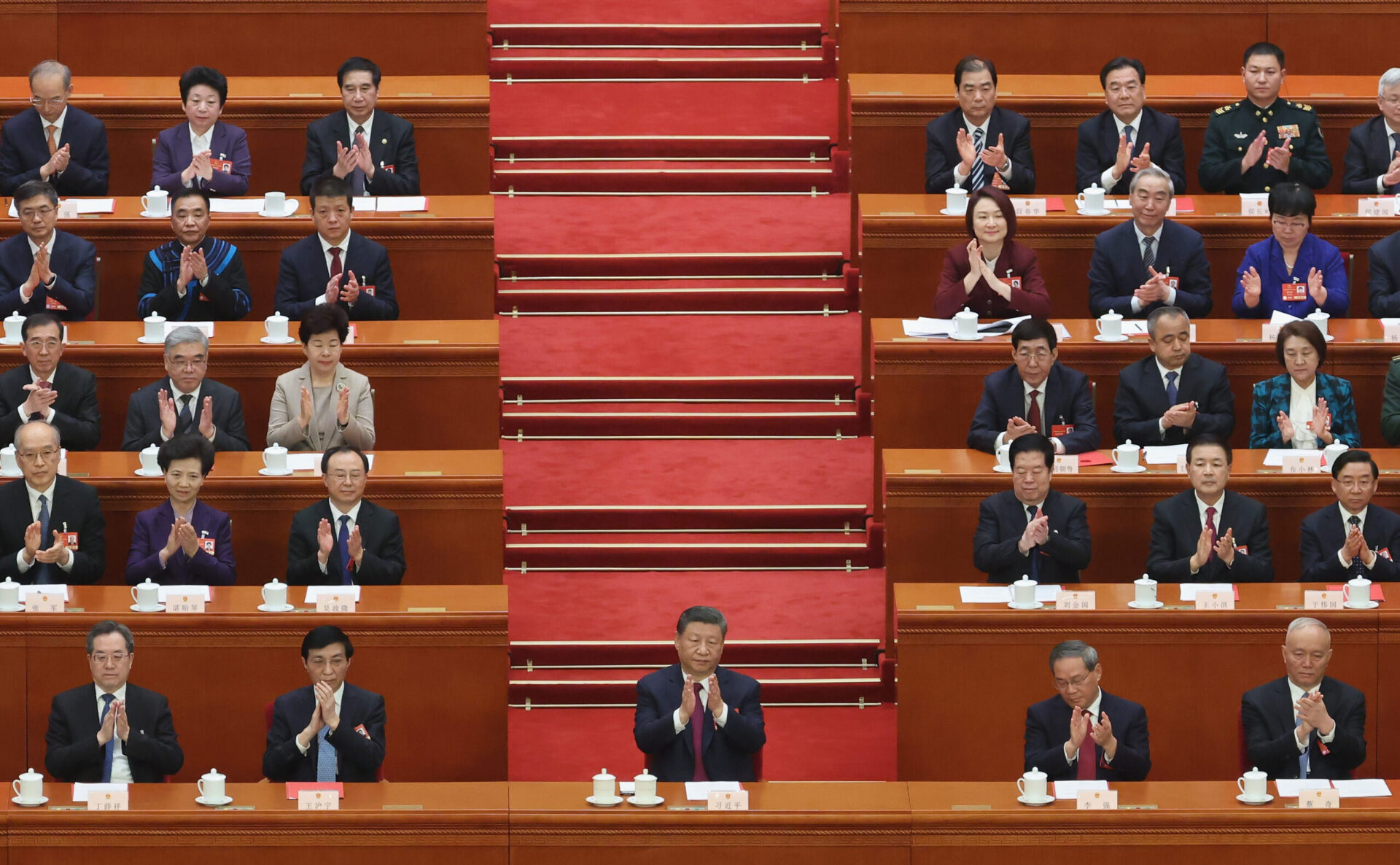
Why Beijing Wants the Dalai Lama to Reincarnate
Why Beijing Wants the Dalai Lama to Reincarnate
Introduction
A strange battle is waiting to unfold at the center of the Sino-Tibetan conflict: the fight over the Dalai Lama’s reincarnation. As the 86-year-old Tibetan leader, who has spent most of his life in exile, advances further in age, there is growing uncertainty about where, or whether, his reincarnation might appear. In a 2011 statement, he laid out several different succession scenarios, one of which was the possibility that he might bring the lineage to an end (Office of his Holiness the Dalai Lama, September 24, 2011). The Chinese government was incensed; it vowed to install its own 15th Dalai Lama after the demise of the incumbent—with or without his consent (Tibetan Review, December 3, 2015).
“The title of Dalai Lama is conferred by the central government, which has hundreds of years of history,” said Chinse Foreign Ministry spokesperson Hua Chunying in 2014 (China Daily, September 11, 2014). In 2017, Zhu Weiqun, Chair of the Ethnic and Religious Affairs Committee of the Chinese People’s Political Consultative, reaffirmed this position. He stated, “the reincarnation of living Buddhas is a religious and politic issue as Buddhism impacts Tibet’s society and politics and the central government must have a determining say in the matter” (Global Times, December 10, 2017). In 2019, Chinese Foreign Ministry spokesman Geng Shaung reiterated Beijing’s stance once again, stating “the reincarnation of living Buddhas, including the Dalai Lama, must comply with Chinese laws and regulations and follow religious rituals and historical conventions” (India Today, November 11, 2019). Geng was referring to legal measures passed by the Chinese government in 2007, authorizing itself to determine which Buddhist lamas were “eligible to reincarnate” (The State Council of the People’s Republic of China (PRC), July 18, 2007).
The Chinese Communist Party’s (CCP) sudden enthusiasm for reincarnation is puzzling given its longstanding hostility to religion. Observers have ridiculed the incongruity of a staunchly atheist regime participating in Buddhist reincarnation affairs. But the irony runs deeper: Beijing has long maligned the Dalai Lama as a “criminal” and a “wolf in monk’s robes” who seeks to “split the motherland” (China Daily, March 7, 2011; PRC’s Embassy in the U.S.). Images of the Dalai Lama are banned in Tibet, and any reference to him online or offline is strictly prohibited and promptly punished. Chinese leaders have called him a “separatist” and a “terrorist,” placing him among what the Chinese government labels the “three evil forces” of “terrorism, separatism, and religious extremism” (Deccan Herald, September 1, 2011).
Given Beijing’s animosity toward the Tibetan leader, why would the Chinese government want him to reincarnate at all? Why perpetuate an institution it has so persistently vilified? This article argues that the colonial nature of China’s rule over Tibet and the hegemonic nature of its geopolitical ambitions in Asia combine to make the institution of the Dalai Lama potentially valuable for Beijing.
Legitimating Colonial Rule in Tibet
No institution holds greater command over the Tibetan people’s loyalty than that of the Dalai Lamas, who ruled Tibet from 1642 to 1951. After the PRC’s invasion prompted the current Dalai Lama to flee to India in 1959, he set up a Tibetan government in exile, which he led until 2011, when he transferred political authority to a democratically elected prime minister. Still, for most Tibetans in Tibet as well as those in exile, devotion to the Dalai Lama remains a central feature of their faith. As such, the question of who selects the next Dalai Lama is of great political consequence for Beijing.
The issue of the Dalai Lama’s reincarnation is even more significant as Tibetans generally see Chinese rule as foreign and illegitimate. After seven decades of political repression and ideological indoctrination, Beijing has “failed to win the hearts and minds” of the Tibetan people (ANI News, September 2, 2021). Tibetans are subjects rather than citizens of China, and the Chinese government’s relationship with Tibet remains colonial in many respects. A key feature of colonial rule is the role played by local intermediaries who help make the central government more legitimate to the periphery while making the periphery more “legible”—to borrow a concept from James C. Scott—and therefore more manageable, to the state. [1] For Beijing, the death of this Dalai Lama represents an opportunity to groom a new and more pliable intermediary who will work to legitimize Beijing in the eyes of the Tibetan people.
Generally, there are three types of legitimacy that keep a regime afloat: 1) popular endorsement through democratic elections; 2) economic performance; and 3) charismatic authority. The first kind of legitimacy is unavailable to Beijing unless it democratizes. The second type of legitimacy is weak in Tibet: the Communist Party’s economic performance, though impressive in the capital-intensive and labor-driven coastal cities, has been lackluster on the Tibetan plateau, where nomads and farmers comprise most of the population. Since the first two sources of legitimacy are largely inaccessible to Beijing, the third—charismatic authority, particularly that of religious figures—becomes indispensable to legitimizing PRC rule in Tibet.
In fact, Beijing has historically tapped into the religious charisma of lamas and used Buddhism as a political instrument in its western frontiers. The historian Gray Tuttle has argued that the Republican-era Chinese government, having lost the Sino-Tibetan battle of 1918 and failed to annex Tibet by force, “actively attempted to use Buddhism to incorporate Tibet in the modern Chinese nation-state.” [2] The Chinese Nationalist leaders, who were trying to persuade an independent Tibet to join the Chinese nation-state at the time, searched for a unifying rhetoric that could link Tibetan and Chinese identities. In 1933, Nationalist Party leader Dai Jitao argued that Buddhism “was the one uniting feature” that could be exploited to bridge the racial, cultural, and linguistic gap between the two “estranged peoples.” [3]
During that era, when nations in the rest of Asia were struggling to establish their independence, the Chinese government recruited high-ranking Tibetan lamas and charged them with the task of persuading Tibet to give up its sovereign status. The Ninth Panchen Lama, according to his biographer Fabienne Jagou, helped the Nationalist Party of China portray itself as a Buddhist regime whose polity Tibetans and Inner Mongolians would do well to join. He advocated the unification of Tibet and China, arguing that “the union between Tibet and China is doubly profitable, while their separation harms both parties.” [4] In the Chinese leadership’s vision, this is precisely the legitimating role that a Beijing-appointed Fifteenth Dalai Lama might play in the future––with far greater effectiveness than the Panchen Lama. [5] Helping to dampen dissent in China’s wild west, though, is hardly the only use Beijing envisions for a Buddhist puppet pope.
Facilitating Regional Hegemony in Asia
Beyond Tibet, the institution of the Dalai Lama extends its spiritual authority to several Buddhist countries in Asia. Key among them is Mongolia, where his Geluk school of Tibetan Buddhism has predominated the religious landscape for centuries and his moral influence can be converted into political power in times of crisis. Similarly, in Taiwan, where the CCP is viewed with suspicion and hostility, the Dalai Lama remains highly respected, especially among the island’s Buddhist population.
Most significantly, the Tibetan leader is revered by the Buddhist indigenous populations of Ladakh, Sikkim, and Arunachal Pradesh, located along the sensitive 2,100-mile Sino-Indian border separating the world’s two most populous nations. The geopolitical importance of these border regions in the southern Himalayan belt cannot be overstated. [6] As China and India compete for military supremacy in the Himalayas and regional hegemony in Asia, both sides are aware of the strategic benefits that would accrue to whoever can harness the Dalai Lama’s unparalleled soft power in the region (DeepStrat, July 13, 2021).
In the nuclear age, when the risk of minor incidents escalating into full blown nuclear war makes military action irrational and unattractive even to belligerent regimes, conflict outcomes may hinge on the ability and willingness of states to exploit non-military sources of power. In this light, it is easy to see why Beijing is interested in exploiting the Buddhist institution of reincarnation as an alternative tool for pursuing regional hegemony. In a future Sino-Indian conflict, a pro-Beijing Dalai Lama could be the ace in China’s pocket.
Conclusion
The most likely future scenario is one where there are two rival claimants to the throne—one recognized by Dharamshala and the other by Beijing (The Guardian, July 31, 2021). While there is little doubt that the Tibetan people will accept Dharamshala’s candidate as the current Dalai Lama’s genuine successor, it will be difficult to dismiss the pro-Beijing claimant as entirely irrelevant. The exile candidate will carry greater moral authority and internal legitimacy, but the PRC-backed puppet will enjoy greater financial resources and political access. China will use its economic leverage and political clout to open doors for its own candidate and raise his profile on the highest stages, while working to marginalize the exile candidate in the global arena. For example, Beijing has over the years successfully pressured dozens of countries to deny visas to the current Dalai Lama––a Nobel laureate no less––and has effectively rendered him a political pariah in parts of Asia and Africa (Human Rights Watch, June 19, 2006; The Guardian, September 4, 2014).
Even so, grooming and deploying a pro-Beijing Fifteenth Dalai Lama is bound to be more complicated in practice than in theory. Clearly, Tibetans, and much of the Buddhist world at large, will reject a reincarnation selected by a communist regime that does not subscribe to their faith in the first place. More interestingly, a central but often overlooked reason behind the current Dalai Lama’s godlike standing among Tibetans is the defiance he mounted against China after the fall of Tibet. From his base in India, the young Dalai Lama founded the Tibetan government in exile and launched a sustained international campaign that discredited the PRC. In defying the Chinese government, he became the face of Tibetan resistance and the symbol of pan-Tibetan nationalism. In other words, the exalted status of the current Dalai Lama in the Tibetan community is a result of his early political opposition to Chinese rule as much as his ecclesiastical position within Tibetan Buddhism. This means, somewhat paradoxically, that the only way in which a Beijing-appointed Fifteenth Dalai Lama might be able to earn Tibetan public support will be by defying Beijing.
Tenzin Dorjee is Senior Researcher and Strategist at Tibet Action Institute, the Stephanie G. Neuman Fellow in Comparative Defense Studies at the Saltzman Institute of War and Peace Studies, and a PhD candidate at Columbia University’s political science department.
Notes
[1] See James C. Scott, Seeing Like a State: How Certain Scheme to Improve the Human Condition Have Failed (New Haven, CT: Yale University Press, 1998).
[2] Gray Tuttle, Tibetan Buddhism in the Making of Modern China (New York: Columbia University Press, 2005), 11.
[3] Ibid., 12.
[4] Fabienne Jagou, The Ninth Panchen Lama: A Life at the Crossroads of Sino-Tibetan Relations (Ecole Francaise D’extreme-Orient, 2011), 85.
[5] The current incarnation of the Panchen Lama is a boy named Gendun Choekyi Nyima, the tenth incarnation in the lineage, who has been in Beijing’s captivity since 1995 after being recognized by the Dalai Lama. The Chinese government abducted and made him disappear at the age of six and installed its own puppet candidate, a boy named Gaincain Norbu.
[6] See P. K. Gautam, Jagannath P. Panda, and Zakir Hussain. Tibet and India’s Security: Himalayan Region, Refugees, and Sino-Indian Relations (New Delhi, India: Institute for Defence Studies and Analyses), 2012.
For additional information, see Gilley, Bruce. The Right to Rule: How States Win and Lose Legitimacy. New York, NY: Columbia University Press, 2009; Norbu, Dawa. China’s Tibet Policy. Richmond, VA: Curzon Press, 2001.


